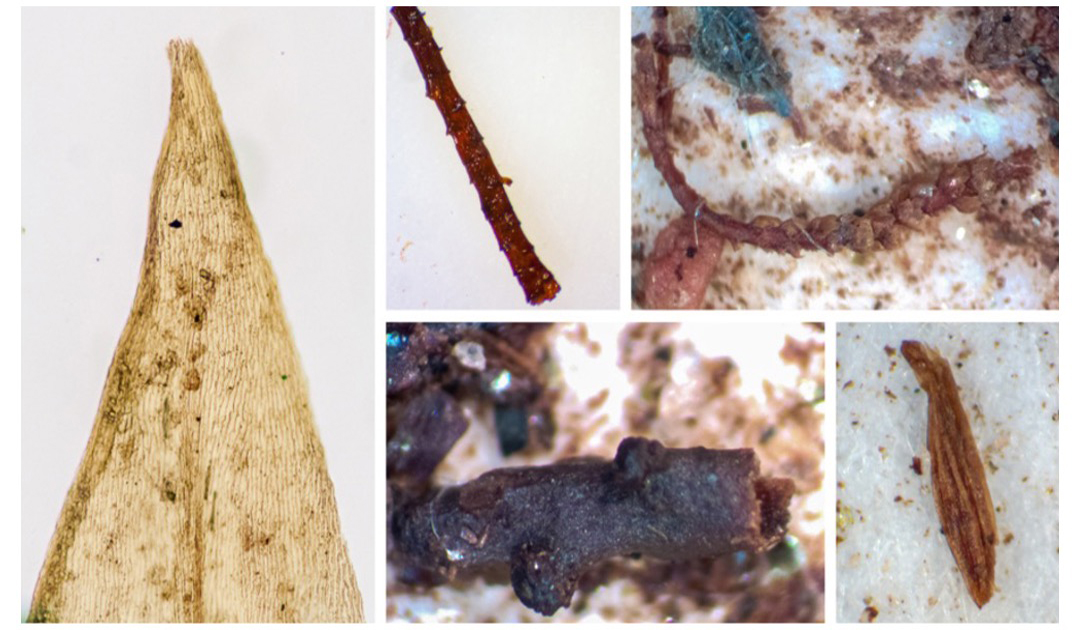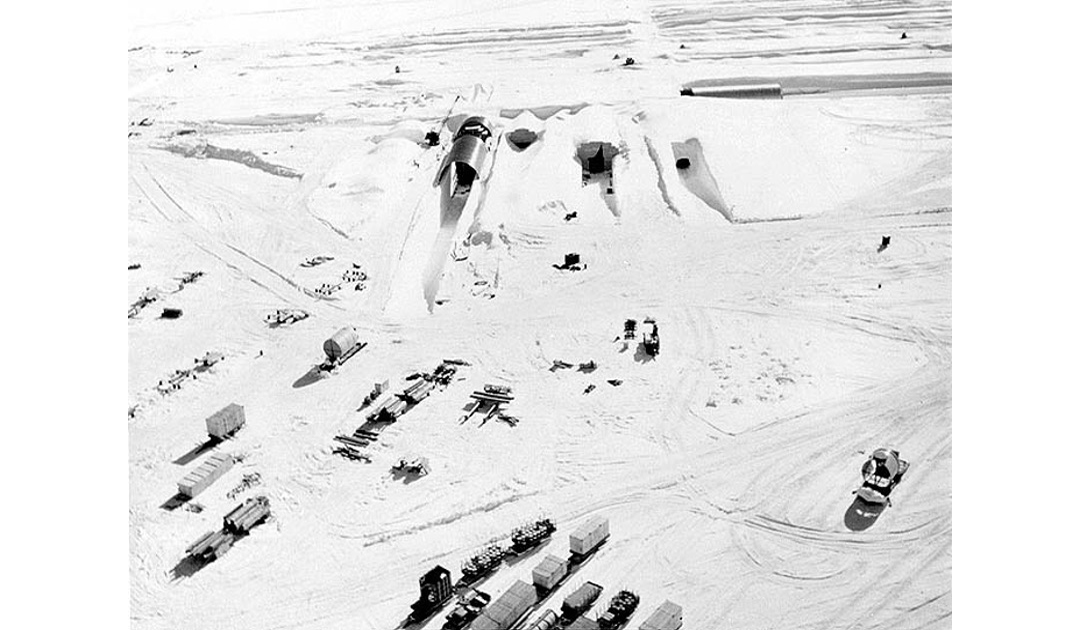
Vegetation traces found in an ice core taken nearly 60 years ago in the far north-west corner of Greenland suggest that the ice sheet had largely melted over 400,000 years ago, at the time of the interglacial era when temperatures rose to similar levels as today but due to natural cycles and not caused by human activities. Though the Greenland ice cap has often been seen as a giant shield of ice, this study shows that it is actually much more vulnerable.
Camp Century, Northwest Greenland, in the 1960s. Several ice cores have been extracted from the ice cap, nearly 1,500 metres thick. One of these samples, taken from a depth of 1,387 metres, is over three metres long and contains ice and rocky sediment. Previously forgotten in a freezer, it was rediscovered by scientists in 2017, who decided to analyze it.
Green traces in the ice
What they found was surprising: the sample contained traces of moss and vegetation. “Measurements made on subglacial sediments from the Camp Century ice core in northwest Greenland show that the site was ice-free during the interglacial that occurred around 400,000 years ago”.

The researchers used a number of different techniques to produce these results. First, they used luminescence dating to determine when the minerals were last exposed to sunlight or high heat. Next, to evaluate when this ice-free period began, the research team used the quartz isotope evaluation technique.
The team concluded that the mineral sediments in the ice core had not only been exposed to sunlight in the past (i.e. could not have been under the ice), but had been so for almost 14,000 years.
With the northwestern part of Greenland stripped of its heavy ice cover, researchers wondered what the oceans and seas looked like. To answer this question, they developed models which showed with such a large melting of the island’s ice sheet, sea levels would have risen by 1.4 to 5.5 meters.
A vulnerable shield
Appeared during the interglacial period, the region had experienced from a natural warming of around +1 to +1.5°C. In comparison, we are experiencing +1.1°C today compared to the preindustrial era. With one difference, though: this interglacial period extended over tens of thousands of years.
And it is worrying: if the Greenland ice cap melted 400,000 years ago because of a warming of 1 to 1.5°C which extended over a timespan of more than 10,000 years, it is very likely that this phenomenon happens again.

For a long time, it was thought that the Greenlandic ice sheet was a sort of solid shield that had rested on the bedrock of the island for more than 2.5 million years. However, the ice core from Camp Century suggests just the opposite, showing the vulnerability of this mass of ice. And that’s very bad news: “If moderate warmth for 29 000 years during MIS 11 (the interglacial period that took place 424,000 to 374,000 years ago, editor’s note) resulted in substantial ice loss from Greenland, then rapid, prolonged, and considerable anthropogenic Arctic warming will likely cause melting of the Greenlandic inlandsis, raise sea level, and trigger additional climate feedbacks in the coming centuries “, the authors conclude.
Mirjana Binggeli, PolarJournal
Link to the study : Andrew J. Christ, Tammy M. Rittenour, Paul R. Bierman, Benjamin A. Keisling, Paul C. Knutz, Tonny B. Thomsen, Nynke Keulen, Julie C. Fosdick, Sidney R. Hemming, Jean-Louis Tison, Pierre-Henri Blard, Jørgen P. Steffensen, Marc W. Caffee, Lee B. Corbett, Dorthe Dahl-Jensen, David P. Dethier, Alan J. Hidy, Nicolas Perdrial, Dorothy M. Peteet, Eric J. Steig and Elizabeth K. Thomas, “Deglaciation of northwestern Greenland during Marine Isotope Stage 11”, 20 July 2023, Science.
DOI: 10.1126/science.ade4248
More on the subject :





